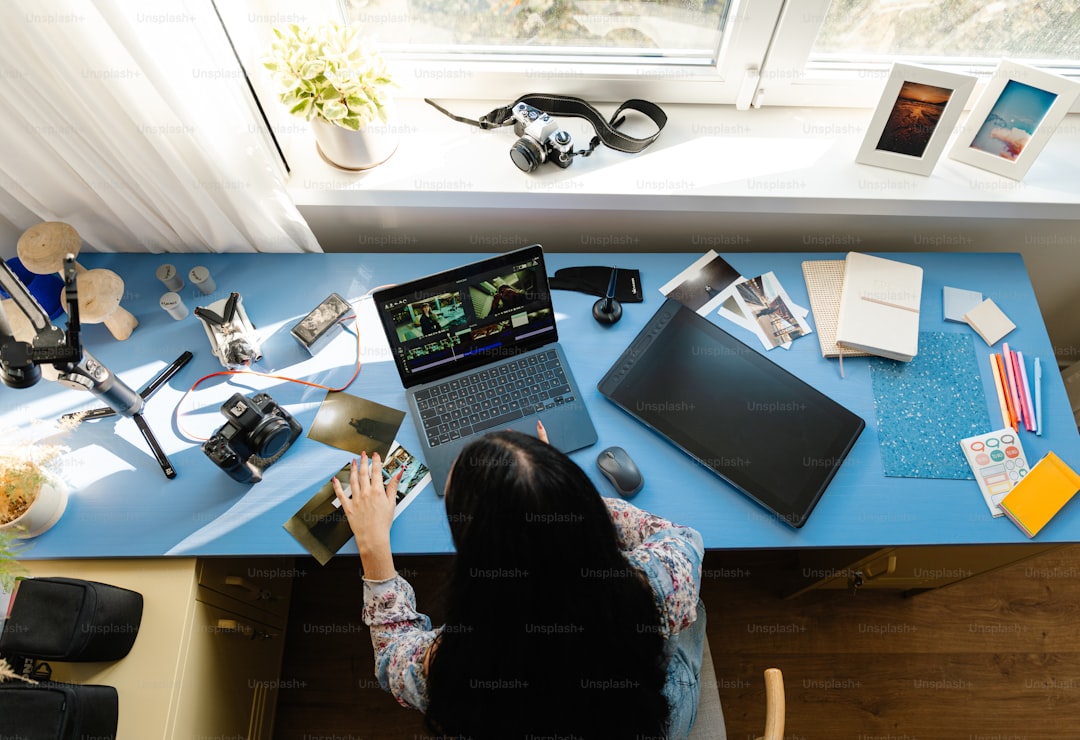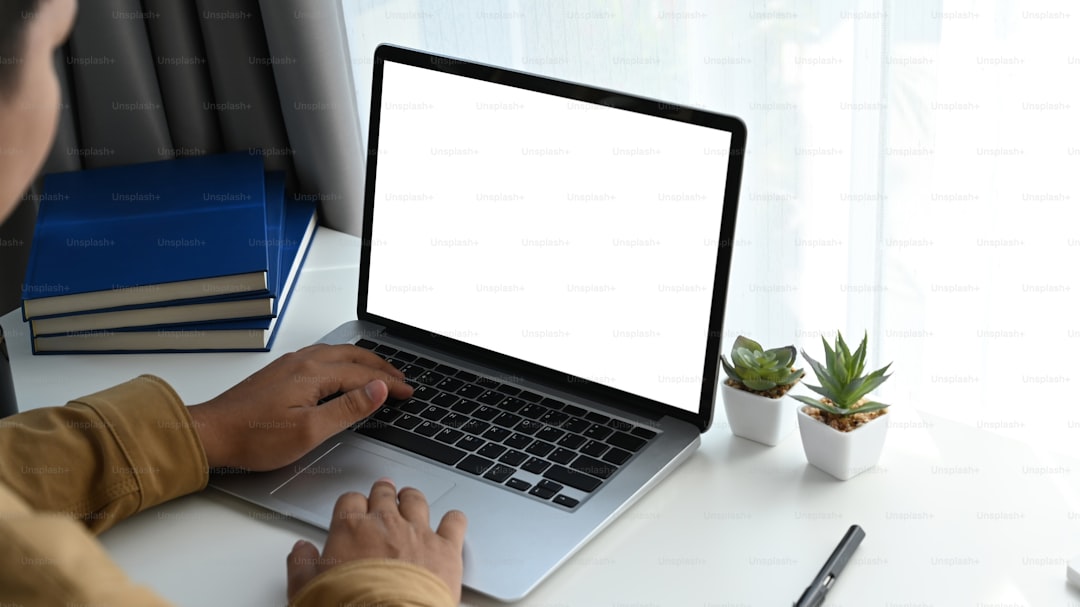Mastering Remote Productivity for Digital Nomads

Introduction
The digital nomad lifestyle promises freedom, adventure, and the chance to work from anywhere in the world. Yet, the same freedom that makes the lifestyle attractive can also be a source of productivity challenges. Unreliable internet, shifting time zones, and a constant stream of new environments can erode focus and make it difficult to meet deadlines. Mastering remote productivity is not about finding a single magic trick; it is about building a system that adapts to the nomadic rhythm while preserving the quality and consistency of work.
In this guide we will explore the mental models, practical tools, and daily habits that enable digital nomads to stay productive no matter where they set up their laptop. From choosing the right gear to structuring your day, from communicating across continents to safeguarding your health, each section provides actionable advice that can be implemented immediately.
Understanding Remote Productivity
The Core Principles
Remote productivity is built on three core principles: autonomy, accountability, and adaptability.
- Autonomy means you have full control over when, where, and how you work. It is a double‑edged sword that requires self‑discipline to turn freedom into output.
- Accountability replaces the traditional office supervision with self‑imposed standards, client expectations, and transparent tracking systems.
- Adaptability acknowledges that each new location brings unique constraints—different Wi‑Fi quality, cultural norms, and time‑zone differences. Your workflow must bend without breaking.
When these principles are aligned, the remote work experience becomes sustainable and rewarding.
The Productivity Mindset
A productive remote worker cultivates a mindset that treats work as a series of intentional actions rather than a background activity. This mindset includes:
- Clarity of purpose – knowing why each task matters and how it contributes to larger goals.
- Focus on outcomes – measuring success by deliverables completed, not by hours logged.
- Growth orientation – viewing obstacles as opportunities to refine processes and acquire new skills.
Adopting this mindset is the first step toward a systematic approach to remote productivity.
Setting Up a Portable Workspace
Choosing the Right Gear
A reliable portable workspace starts with equipment that balances performance, durability, and weight. Consider the following categories:
- Laptop – Opt for a device with a long battery life (8+ hours), solid-state storage, and a comfortable keyboard. Many digital nomads favor ultra‑light models with a 13‑inch display for easy mobility.
- External Monitor – A 15‑inch USB‑C monitor can dramatically improve ergonomics when you have a stable surface. Look for models that are thin, lightweight, and powered directly from the laptop.
- Keyboard and Mouse – A compact mechanical keyboard and a Bluetooth mouse add comfort without adding bulk. Some travelers keep a foldable ergonomic keyboard for longer stays.
- Power Solutions – Carry a universal travel adapter, a high‑capacity power bank (at least 30,000 mAh), and a spare laptop charger. A solar charger can be a lifesaver in remote locations.
- Noise‑Cancelling Headphones – Essential for blocking out café chatter, street noise, or airplane hum. Choose a pair with a reliable Bluetooth connection and long battery life.
- Portable Router – A travel router can turn hotel Wi‑Fi into a private network, improve signal stability, and allow you to create a dedicated hotspot for your devices.
Optimizing the Physical Environment
Even the best gear cannot compensate for a poorly arranged workspace. Follow these guidelines to create a functional environment wherever you are:
- Find a stable surface – A café table, co‑working desk, or a portable lap desk. Ensure it is level to avoid typing fatigue.
- Control lighting – Natural light is ideal, but position the screen to avoid glare. A compact LED lamp with adjustable brightness can help in dim settings.
- Maintain posture – Use a laptop stand or a stack of books to raise the screen to eye level. Keep elbows at a 90‑degree angle and feet flat on the floor.
- Minimize clutter – Keep only essential items (laptop, notebook, pen, headphones) on the desk. Store the rest in a bag to reduce visual distractions.
- Establish a “work zone” – Even in a shared space, signal to others that you are in focus mode. A simple “Do Not Disturb” sign or a pair of headphones can be enough.
Time Management Strategies
Aligning Work Hours with Time Zones
Digital nomads often juggle clients and collaborators spread across multiple time zones. The key is to create a core overlap window that satisfies most stakeholders while preserving personal rhythm.
- Map out time‑zone overlaps – Use a world clock app to visualize when your primary contacts are online.
- Define a “core block” – Reserve 2‑4 hours each day where you are fully available for meetings, real‑time collaboration, and quick responses.
- Schedule deep work outside the core – Use early mornings or late evenings for focused tasks that require uninterrupted concentration.
By anchoring your day around a predictable core, you reduce the mental load of constantly shifting availability.
The Pomodoro Technique for Nomads
The Pomodoro Technique—working in short, timed intervals followed by brief breaks—works exceptionally well in environments with intermittent distractions.
- Set a timer for 25 minutes and work on a single task.
- Take a 5‑minute break to stretch, hydrate, or check messages.
- After four cycles, take a longer break (15‑30 minutes) to recharge.
This rhythm trains the brain to enter flow quickly and helps you resist the urge to check your phone or social media during work periods.
Weekly Planning Rituals
At the start of each week, dedicate 30 minutes to a planning session:
- Review upcoming deadlines and meetings.
- Break larger projects into bite‑size tasks.
- Assign each task to a specific day and time block.
- Identify potential travel or connectivity challenges for the week.
Writing the plan in a digital notebook (e.g., Notion, Evernote) ensures you can access it from any device and adjust it on the fly.
Tools and Technology
Project Management Platforms
A robust project management tool provides visibility, accountability, and a central hub for all deliverables.
- Trello – Visual board system ideal for freelancers who prefer a kanban view.
- Asana – Offers timeline and workload views for more complex projects.
- ClickUp – Combines tasks, docs, goals, and time tracking in a single workspace.
Choose a platform that integrates with your communication tools and supports mobile access.
Time‑Tracking and Invoicing
Accurate time tracking builds trust with clients and helps you understand where your hours go.
- Toggle Track – Simple timer with reporting features; works offline and syncs when online.
- Harvest – Combines time tracking, expense logging, and invoicing; integrates with many project management apps.
- Paymo – Offers task management, time tracking, and invoicing in one package.
When invoicing, use templates that automatically pull data from your time‑tracking tool, reducing administrative overhead.
Cloud Storage and Collaboration
A reliable cloud storage solution safeguards your work and facilitates collaboration.
- Google Drive – Real‑time document editing and generous free storage.
- Dropbox – Strong sync performance, especially for large media files.
- OneDrive – Seamless integration with Microsoft Office suite.
Maintain a folder hierarchy that mirrors your project structure to keep files easy to locate.
Communication Channels
Effective communication is the lifeblood of remote work. Adopt a mix of synchronous and asynchronous tools:
- Slack – Instant messaging, channel organization, and integrations with task apps.
- Zoom – Video conferencing with screen‑share and recording capabilities.
- Loom – Asynchronous video messages for walkthroughs and updates.
- Email – Formal communication; use filters and labels to prioritize important messages.
Set clear expectations with clients about preferred channels and response times.
Automation and Integration
Automation reduces repetitive tasks and frees mental bandwidth.
- Zapier – Connects apps and creates “zaps” that trigger actions (e.g., new Trello card creates a Google Calendar event).
- IFTTT – Simple triggers for personal productivity (e.g., save starred emails to a Notion database).
- Keyboard Maestro (macOS) or AutoHotkey (Windows) – Build custom shortcuts for routine actions.
Spend a few hours each month reviewing your workflow for opportunities to automate.
Communication Best Practices
Setting Clear Expectations
Before beginning a project, clarify:
- Working hours and core overlap.
- Preferred communication methods.
- Turnaround times for deliverables and revisions.
- Frequency of status updates (daily, weekly, or milestone‑based).
Document these agreements in a project brief or contract to avoid misunderstandings later.
Writing Concise, Actionable Messages
Remote communication lacks non‑verbal cues, so clarity is paramount.
- Start with a brief context statement.
- List specific actions or questions using bullet points.
- End with a clear deadline or next step.
Example:
Hi Alex,
I’ve completed the wireframe for the landing page. Please review the following items:
- Layout alignment on mobile (see attached screenshots)
- Color palette contrast for accessibility
- Copy placement for the hero section
Let me know your feedback by Thursday, 5 PM CET so I can proceed with the high‑fidelity mockup.
Managing Time‑Zone Differences
When scheduling meetings across time zones:
- Use a shared calendar that displays multiple time zones.
- Offer at least two time options to accommodate participants.
- Record meetings for those who cannot attend live, and share the recording promptly.
Handling Delayed Responses
If a client or collaborator takes longer than expected to reply:
- Send a polite follow‑up after 24‑48 hours, referencing the original message.
- Offer a brief summary of pending decisions to make it easy to respond.
- If the delay threatens a deadline, propose a temporary workaround and note that a final decision is required later.
Managing Distractions
Identifying Common Distractions
- Ambient noise – café chatter, street traffic, or construction.
- Digital interruptions – social media notifications, email ping‑pongs.
- Travel logistics – packing, transportation, visa paperwork.
- Curiosity – exploring a new city can pull focus away from work.
Strategies to Minimize Interruptions
- Noise control – Use noise‑cancelling headphones or a white‑noise app. In a hotel, request a quiet room or use a portable sound‑blocking screen.
- Digital hygiene – Turn off non‑essential notifications. Use “Do Not Disturb” mode during deep‑work blocks.
- Physical boundaries – Work in a dedicated space, even if it’s a corner of a co‑working hub. Signal to companions that you are in focus mode.
- Timeboxing leisure – Schedule exploration activities in the same calendar as work tasks, ensuring they do not bleed into productive periods.
The “Two‑Minute Rule”
If a task can be completed in two minutes or less—answering a quick email, confirming a meeting time—handle it immediately. This prevents small items from accumulating and cluttering your mental to‑do list.
Maintaining Work‑Life Balance
Defining “Work” vs. “Travel”
When your home and office are the same place, the line between work and leisure blurs. Create mental partitions:
- Morning routine – Begin each day with a non‑work ritual (e.g., coffee on a balcony, a short walk) to signal the start of work.
- Evening shutdown – Log out of work tools, turn off notifications, and transition to personal time at a set hour.
- Weekend boundaries – Reserve at least one day per week for pure exploration or rest, without any client meetings.
Scheduling Rest and Recreation
- Micro‑breaks – Every hour, stand up, stretch, or look out the window for a minute.
- Physical activity – Incorporate a workout, yoga session, or a run into your routine. Many co‑working spaces offer fitness classes.
- Social connection – Join local meet‑ups or digital nomad groups to avoid isolation.
Preventing Burnout
- Track work hours – Use your time‑tracking app to see if you are consistently exceeding a healthy weekly limit.
- Set realistic expectations – Communicate capacity limits to clients early. It is better to underpromise and overdeliver than the opposite.
- Take “digital detoxes” – Allocate a full day or half‑day where you disconnect from all screens and focus on offline activities.
Health and Wellbeing on the Road
Nutrition and Hydration
- Carry reusable water bottles – Staying hydrated supports focus and energy.
- Plan meals – When possible, choose balanced meals with protein, complex carbs, and vegetables. Many nomads rely on local markets for fresh produce.
- Avoid excessive caffeine – It can lead to crashes later in the day, especially when adjusting to new time zones.
Managing Sleep Across Time Zones
- Gradual adjustment – Shift your sleep schedule by 30‑minutes per day before a major time‑zone change.
- Light exposure – Use natural daylight to reset your circadian rhythm. In the evening, dim lights and limit blue‑light exposure from screens.
- Sleep accessories – A travel pillow, eye mask, and earplugs can improve sleep quality in unfamiliar environments.
Ergonomic Health
- Portable standing desk – A lightweight sit‑stand converter can reduce back strain.
- Regular movement – Set a timer to stand, stretch, or walk every hour.
- Check posture – Keep shoulders relaxed, wrists neutral, and screen at eye level.
Building Routines That Travel
The “Anchor Routine”
An anchor routine is a set of activities that you perform no matter where you are. It creates continuity and reduces decision fatigue. Typical components include:
- Morning coffee and a brief planning session.
- A 10‑minute meditation or breathing exercise.
- A short walk or stretch before starting the first work block.
- Evening journaling to reflect on achievements and challenges.
Because the routine is portable, it reinforces discipline even in chaotic settings.
Adapting Routines to Local Context
While the anchor routine stays constant, you can tweak certain elements based on local conditions:
- Morning workout – If a city has a scenic park, replace a gym session with a jog.
- Meal times – Align with local dining customs to experience culture while staying nourished.
- Work hours – Shift the core block to match the most productive time of day in the new location.
Flexibility within a structured framework maximizes both productivity and cultural immersion.
Leveraging Remote Job Boards
Finding High‑Quality Opportunities
Digital nomads rely on curated remote job boards to locate projects that match their skill set and lifestyle preferences. Some reputable sources include:
- We Work Remotely – Wide range of tech, design, and marketing roles.
- Remote OK – Lists remote jobs with salary transparency.
- AngelList – Startup-focused opportunities, many of which are fully remote.
- FlexJobs – Paid platform that screens listings for legitimacy.
- Remotive – Community‑driven board with a strong focus on work‑life balance.
When browsing, filter by “contract”, “freelance”, or “part‑time” to find arrangements that align with a nomadic schedule.
Crafting a Remote‑Friendly Profile
Your online presence is often the first impression for potential clients.
- Portfolio website – Showcase recent work, case studies, and client testimonials. Keep it lightweight for quick loading on slower connections.
- LinkedIn – Highlight remote experience, specify time‑zone flexibility, and use keywords like “remote”, “distributed team”, and “digital nomad”.
- GitHub or Behance – Depending on your field, maintain an active repository of projects or design samples.
Include a concise “About” section that mentions your ability to work across time zones and your preferred communication tools.
Applying Strategically
- Tailor each application – Reference the specific project requirements and explain how your experience solves the client’s problem.
- Showcase remote competence – Mention tools you use (e.g., Slack, Asana) and past successes managing time‑zone differences.
- Follow up politely – If you haven’t heard back within a week, send a brief follow‑up expressing continued interest.
Continuous Learning and Skill Development
Identifying Skill Gaps
Remote work often demands a blend of technical expertise and soft skills. Perform a self‑audit every quarter:
- List core competencies required for your niche (e.g., front‑end development, copywriting, UX research).
- Rate your proficiency on a scale of 1‑5.
- Highlight gaps that could limit higher‑paying projects or client satisfaction.
Learning Resources on the Move
- Online courses – Platforms like Coursera, Udemy, and Skillshare provide video lessons that can be downloaded for offline study.
- Podcasts – Listen during commutes or while exercising. Topics range from productivity hacks to industry trends.
- E‑books – Store a library of PDFs on a cloud drive for easy access on any device.
- Community webinars – Join free webinars hosted by industry groups to stay current and network.
Practicing New Skills
Apply newly learned techniques to personal side projects or volunteer work. Real‑world application solidifies knowledge and provides fresh portfolio material.
Community and Networking
Joining Digital Nomad Communities
Isolation can be a hidden productivity killer. Engaging with peers offers moral support, knowledge exchange, and collaboration opportunities.
- Facebook groups – “Digital Nomad Entrepreneurs”, “Remote Work Hub”.
- Discord servers – Channels dedicated to specific professions (e.g., design, development, writing).
- Reddit – Subreddits like r/digitalnomad and r/remotejs.
- Local meet‑ups – Use platforms like Meetup.com to find coworking events in your current city.
Participate regularly by sharing insights, asking questions, and offering help.
Building Professional Relationships
- Offer value first – Share a useful article, give feedback on a colleague’s work, or suggest a tool.
- Schedule virtual coffee chats – One‑on‑one conversations foster deeper connections.
- Collaborate on small projects – Joint blog posts, open‑source contributions, or co‑hosted webinars can expand your network and showcase teamwork.
Overcoming Common Challenges
Dealing with Unreliable Internet
- Backup connections – Keep a portable LTE hotspot or a SIM card with data for emergencies.
- Offline work – Download necessary files and use offline versions of tools (Google Docs offline, Notion offline mode) before traveling to low‑bandwidth areas.
- Plan around connectivity – Schedule video calls for times when you know the Wi‑Fi is stable, and allocate offline tasks (writing, brainstorming) for weaker connection periods.
Managing Visa and Legal Issues
- Research visa requirements early – Some countries offer digital‑nomad visas that allow extended stays.
- Keep copies of important documents – Passport, work contracts, and insurance policies should be stored both digitally (encrypted cloud) and physically.
- Stay compliant with taxes – Consult a tax professional familiar with international freelance taxation to avoid penalties.
Coping with Loneliness
- Scheduled social activities – Join a language class, cooking workshop, or sports group in your current city.
- Maintain relationships back home – Regular video calls with family and friends provide emotional grounding.
- Practice mindfulness – Meditation apps can help you stay present and reduce feelings of isolation.
Measuring Success and Iterating
Key Performance Indicators (KPIs)
Identify metrics that reflect both productivity and wellbeing:
- Billable hours per week – Tracks work output.
- Project completion rate – Ratio of projects finished on time versus delayed.
- Client satisfaction score – Gather feedback after each project.
- Work‑life balance rating – Self‑assessed score (1‑10) recorded weekly.
- Health metrics – Hours of sleep, steps taken, or minutes of exercise.
Review these KPIs monthly to spot trends and adjust your workflow.
Conducting a Monthly Review
- Gather data – Export time‑tracking reports, list completed tasks, and collect client feedback.
- Analyze – Identify which days or environments produced the most output.
- Reflect – Note any stressors, health issues, or workflow bottlenecks.
- Plan improvements – Set one or two specific actions for the next month (e.g., test a new Pomodoro timer, schedule a co‑working day twice a week).
Continuous iteration keeps your remote productivity system fresh and resilient.
Conclusion
Mastering remote productivity as a digital nomad is a dynamic, ongoing process. It blends the discipline of structured work habits with the flexibility required to thrive in ever‑changing environments. By establishing a portable yet ergonomic workspace, aligning your schedule with global collaborators, leveraging the right suite of tools, and prioritizing health and community, you create a sustainable model that turns freedom into results.
Remember that productivity is not measured by the number of hours you spend at a desk, but by the quality of outcomes you deliver and the balance you maintain in your personal life. Use the strategies outlined here as a foundation, experiment with what fits your unique journey, and keep iterating. With intention and the right systems in place, the world truly becomes your office.
Random Posts

How Much to Spend in Portugal When Working Anywhere
Discover realistic monthly budgets for living and working anywhere in Portugal, from Lisbon to Porto and the Algarve, with cost breakdowns, sample lifestyle plans, and practical tips to stretch every euro while enjoying the culture
2 months ago

Nomadic Fitness Secrets For A Healthy Journey
Discover practical, science backed fitness hacks that let any digital nomad turn beaches, cafés or mountain cabins into personal gyms, boost energy, and stay strong while traveling.
1 month ago

Cryptocurrency Basics Tailored for Traveling Professionals
Discover how crypto keeps your money as mobile as your career: instant cross-border transfers, secure wallets, simple cash-out, and essential tax tips so you can work anywhere without banking limits.
3 weeks ago

Wellbeing Hacks For Travelers Who Work Anywhere
Discover science-backed wellbeing hacks you can pack in a backpack: flexible mindset frameworks, timezone-proof sleep tricks, and no-gym workouts that keep digital nomads energized, focused and resilient wherever they roam.
1 month ago

Nomadic Minimalism and Green Travel Building a Sustainable Community
Discover how stripping down to essentials and traveling responsibly can unite digital nomads into low impact, resource sharing communities that protect the planet and enrich local cultures.
1 month ago
Latest Posts

Essential Software Every Remote Professional Should Use
Master remote work with essential tools: instant messaging like Slack, high definition video calls such as Zoom, and asynchronous voice apps. Streamline communication, stay connected and boost productivity.
1 day ago

Mastering Remote Work Productivity for Digital Nomads and Freelancers
Learn proven habits, tools, and tactics that help digital nomads and freelancers stay focused, deliver quality work, and maintain a sustainable lifestyle while traveling the world.
1 day ago

Tech‑Friendly European Towns Perfect for Remote Living
Discover Europe’s best small towns where fast internet, affordable living and vibrant tech communities let you work remotely while soaking up historic charm, lakeside views or mountain air.
1 day ago